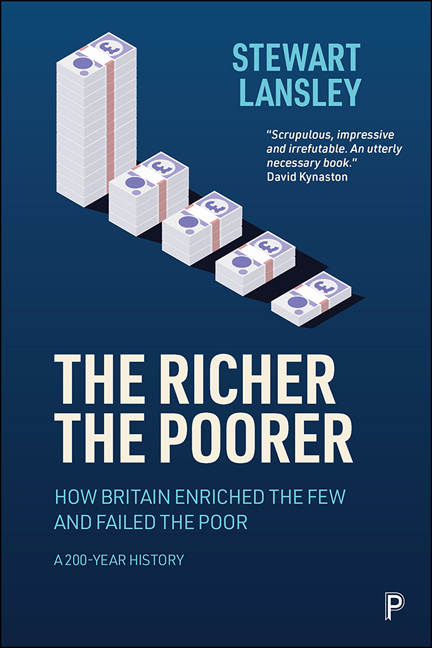Book contents
- Frontmatter
- Miscellaneous Frontmatter
- Dedication
- Epigraph
- Contents
- List of figures
- Preface and acknowledgements
- Introduction: Knighthoods for the rich, penalties for the poor
- PART I 1800–1939
- PART II 1940–59
- PART III 1960–79
- PART IV 1980–96
- PART V 1997–2010
- PART VI 2011–20
- Afterword: COVID-19 and ‘the polo season’
- Notes
- Index
9 - The rediscovery of poverty
Published online by Cambridge University Press: 13 May 2022
- Frontmatter
- Miscellaneous Frontmatter
- Dedication
- Epigraph
- Contents
- List of figures
- Preface and acknowledgements
- Introduction: Knighthoods for the rich, penalties for the poor
- PART I 1800–1939
- PART II 1940–59
- PART III 1960–79
- PART IV 1980–96
- PART V 1997–2010
- PART VI 2011–20
- Afterword: COVID-19 and ‘the polo season’
- Notes
- Index
Summary
The question marks being raised about the persistence of poverty had, initially, little impact. But this was about to change. In 1957, Peter Townsend moved to the London School of Economics (LSE) in the department run by Richard Titmuss. At his modest three-bedroom house in Ealing, where he lived with his wife Kay and daughter Ann, frequent guests included an elderly Richard Tawney, colleagues like Townsend and Labour politicians such as Richard Crossman. Titmuss had an unparalleled influence over the course of British social policy. He is one of few social scientists to have an English Heritage blue plaque marking his former home. A few months before he died in April 1973 at the age of 65, he was still able to fill lecture halls to overflowing.
Those working with Titmuss became part of a group of LSE academics known as the ‘Titmice’. Applied sociologists and close friends, their work soon began to get under the skin of politicians and administrators. At the LSE, Townsend started work on a novel approach to the measurement of poverty with another of the ‘Titmice’, Brian Abel-Smith. Reputedly twenty-seventh in line to the throne, Abel-Smith was an unlikely champion of the poor. While the studies by Charles Booth and Seebohm Rowntree were based on their own local surveys, the Abel-Smith and Townsend study used the government's Family Expenditure Survey, with its host of information about incomes and other aspects of household lifestyles. The Central Statistical Office had already used this source for some groundbreaking analysis of the distributional impact of public spending on household income.
The poor and the poorest
Townsend and Abel-Smith set out to compare poverty rates in 1953 and 1960. The authors had, fleetingly, considered calling their report Poor, Poorer, Poorest, but decided that would be too flippant. The study, finally titled The Poor and the Poorest, found that in 1960, 14 per cent of the population –7.5 million Britons –were living in poverty. Their measure of where the poverty line should be drawn was not based on a minimal subsistence standard, nor was it linked to prevailing living standards, and was essentially expedient.
- Type
- Chapter
- Information
- The Richer, the PoorerHow Britain Enriched the Few and Failed the Poor: A 200-Year History, pp. 83 - 89Publisher: Bristol University PressPrint publication year: 2021



